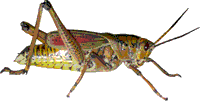Entomology Collections, General

Entomology Papers from Other Sources
Document Type
Article
Date of this Version
1998
Abstract
It is necessary to distinguish new and old gypsy moth, Lymantria dispar (L.), egg masses when conducting gypsy moth population surveys. Egg masses within reach from the ground are touched to determine if they contain unhatched eggs and thus are considered new. The following 2 methods are used for egg masses not within reach: (1) visual discrimination between new and old egg masses or (2) by calculating the percentage of new egg masses at ground level and using this value to adjust counts of all egg masses not within reach. To evaluate these methods, egg-mass persistence and color between generations, the percentage of new and old egg masses at ground level and in the canopy, the ability of observers to visually distinguish new and old egg masses, and the effect of errors on the accuracy of estimates of the percentage of new egg masses was examined. Fifty-five percent of exposed new egg masses studied were still at least 25% intact at the time of the following year's egg-mass survey. However, the color of the egg masses was markedly lighter, providing a mechanism for visually distinguishing new and old egg masses. When egg masses are visually distinguished as new or old with an error rate >0, the resulting estimate of the percent new egg masses is usually biased. The magnitude of the bias varies with the rate of error and the actual percentage of new egg masses in the population, and can result in serious reductions in the accuracy of these estimates. In a field evaluation, new egg masses were incorrectly classified as old 16% of the time and old egg masses were incorrectly classified as new 16% of the time. Because it is unbiased, use of the ratio method to estimate the percentage of new egg masses is recommended whenever 10 or more egg masses are within reach from the ground.


Comments
Published in Environ. Entomol. 27(6): 1452-1462 (1998).